
I grow a wide variety of shade plants. Hellebore does really well, but trying to keep up with pulling the hundreds of seedlings, even though I try to cut off every flower stock after blooming, takes Hellebore off my easy-care list. Epimedium is a nice evergreen ground cover, but it spreads too fast for my liking. Some cultivars of Heuchera have survived many years - and others are expensive annuals in my garden, or do best with more sun. I have not included plants that disappear in the heat of summer, such as Dicentra and Wood Poppy. Many other plants have grown here less than 10 years, but do really well - some examples are Monkshood, Brunnera, Arum, Chelone.
The bed along the front of my north-facing home is filled with plants that have proven themselves over the long haul. They are reasonably disease and pest free, and they grow well with little care. These are some of my longest-living, best-performing perennials for shade that have been very easy to care for.

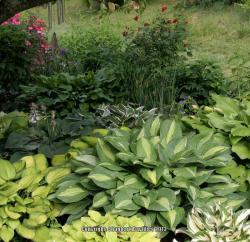

Hosta - In Ohio, you see Hosta planted everywhere. In shade gardens, around mailboxes, in cemeteries, even in full sun. The plants survive wherever they are planted, but they look their best in filtered shade and they prefer it. I have several of the "mini" Hosta along my sidewalk and a collection of the larger ones under a big crabapple tree. Medium-sized Hosta are mixed into the shade beds, where they light up the dark areas with their patterned leaves and variety of leaf colors and textures. Hardy to zone 3, Hosta prefer moist soil and regular watering for optimal growth. They do tolerate the wide range of weather we have here, and they grow well for me, even though I do not do a lot of watering.
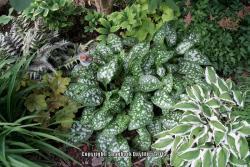
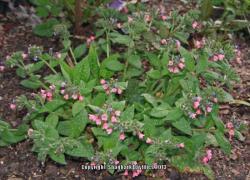
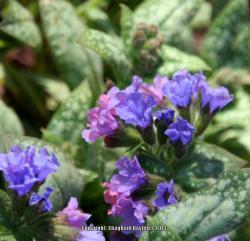
Pulmonaria - Pulmonaria is one of my favorites for shade. Their uniquely patterned foliage usually looks good all summer long, and they are semi-evergreen here, providing interest when few other plants are still showing. The flowers open one color and age to a different shade, or even a different color, such as rose to blue. They do slowly spread outwards. I regularly "cheat" pieces off the edges to give to visitors, so it's not a problem. There are new Pumonarias appearing every year at the nurseries near me. Hardy to zone 3, they prefer moist soil and regular watering. Once in a while, a plant will get powdery mildew. I cut the plant off, keep it moist and new foliage emerges. The pulmonarias I have do well with very little care at all. I deadhead them after they bloom and water them if the weather has been really dry.

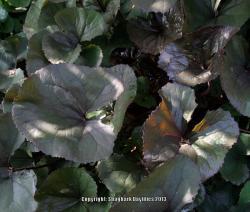
Ligularia 'Britt Marie Crawford' - A large plant, 4 feet tall and wide by the end of summer, this plant makes a statement, and it is one of the plants nearly every visitor comments on. The large leaves are leathery and somewhat glossy. The new leaves are dark purple/chocolate/green and mature to a shade on the green side of a rich purple-brown. In late summer it sends up scapes with golden-orange daisy-like flowers. Quite a contrast to the dark foliage. I don't deadhead my ligularia because the goldfinches love the seeds. Some of the leaves on my plant grow out into the full sun, and they will wilt during the hottest part of the day. Hardy to zone 3, Ligularia prefers rich, moist soil, and it prefers not to dry out.


Astilbe - One of my Astilbe plants has been growing undisturbed for 25 years, although it is recommended to divide them every few years. The deeply cut and sometimes fern-like foliage has a nice sheen and looks great with other shade-loving plants. Astilbe cultivars grow between 2 and 4 feet tall, and can be 2 to 3 feet wide. Preferring dappled shade with rich, moist well-draining soil, Astilbe will tolerate sun if given enough moisture. The foliage may become dry and crispy in times of drought, and it can be cut to the ground if this happens. Depending on the conditions, it may regrow, or it may not grow again until the following spring if the drought continues. Astilbe are known to be heavy feeders. I don't use much fertilizer in my garden, and the Astilbe continue to thrive and bloom year in and year out.

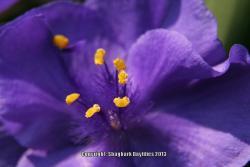

Tradescantia - Spiderwort started out as a plant that spread like crazy for me and I didn't care for that and relentlessly dug up every one I saw. A few years later, I was given a couple of selected seedlings hybridized by a plantsman I know, and they behaved themselves quite well, staying put without spreading all over. Encouraged by these plants, I added a few of the named cultivars I've seen at my local nursery. Although they still sprout up here and there, they don't spread anywhere near as fast as the first deep magenta spiderwort I grew. They have a big flush of bloom in spring, and later on the foliage starts to look tattered. I cut them back before they set seed and they soon grow out and bloom again. I have several growing in full shade and some that are growing in full sun. Spiderwort is a morning and early afternoon flower.
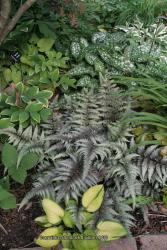
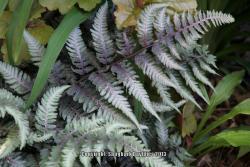
Japanese Painted Fern - One of the things I like the most about my shade garden is the wide variety of foliage textures and colors, so it's not surprising that I love the multicolored fronds and habit of this fern. These ferns, 18 inches tall and 20 inches wide, have been slowly but steadily increasing in size through the years. When I first tried growing Japanese Painted Ferns, I didn't have much luck. I kept trying different spots. I found that they thrive in dappled shade, in rich, organic soil that is not allowed to dry out. With so much clay soil, it was important to find a spot that would drain well, yet not dry out.
| Thread Title | Last Reply | Replies |
|---|---|---|
| Lovely! by plantladylin | Jun 24, 2013 2:21 PM | 17 |
| Your shade garden by Natalie | Jun 24, 2013 7:14 AM | 1 |
| Astilbe by marti | Jun 22, 2013 1:29 PM | 1 |
| Untitled by citysylvia | Jun 20, 2013 11:20 PM | 5 |
| We are neighbors! by crittergarden | Jun 19, 2013 2:49 PM | 1 |